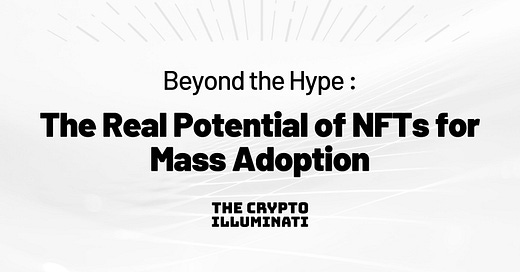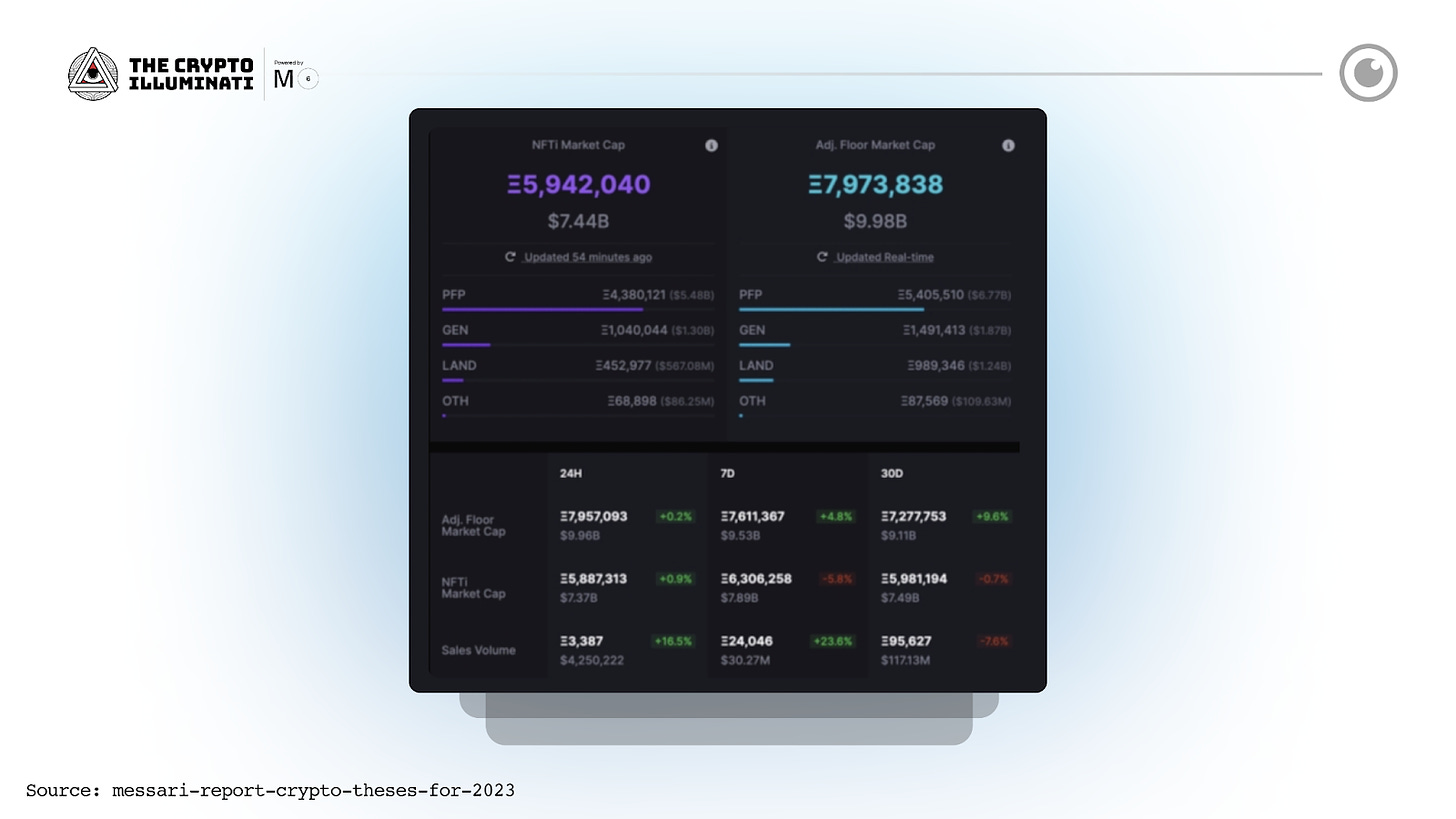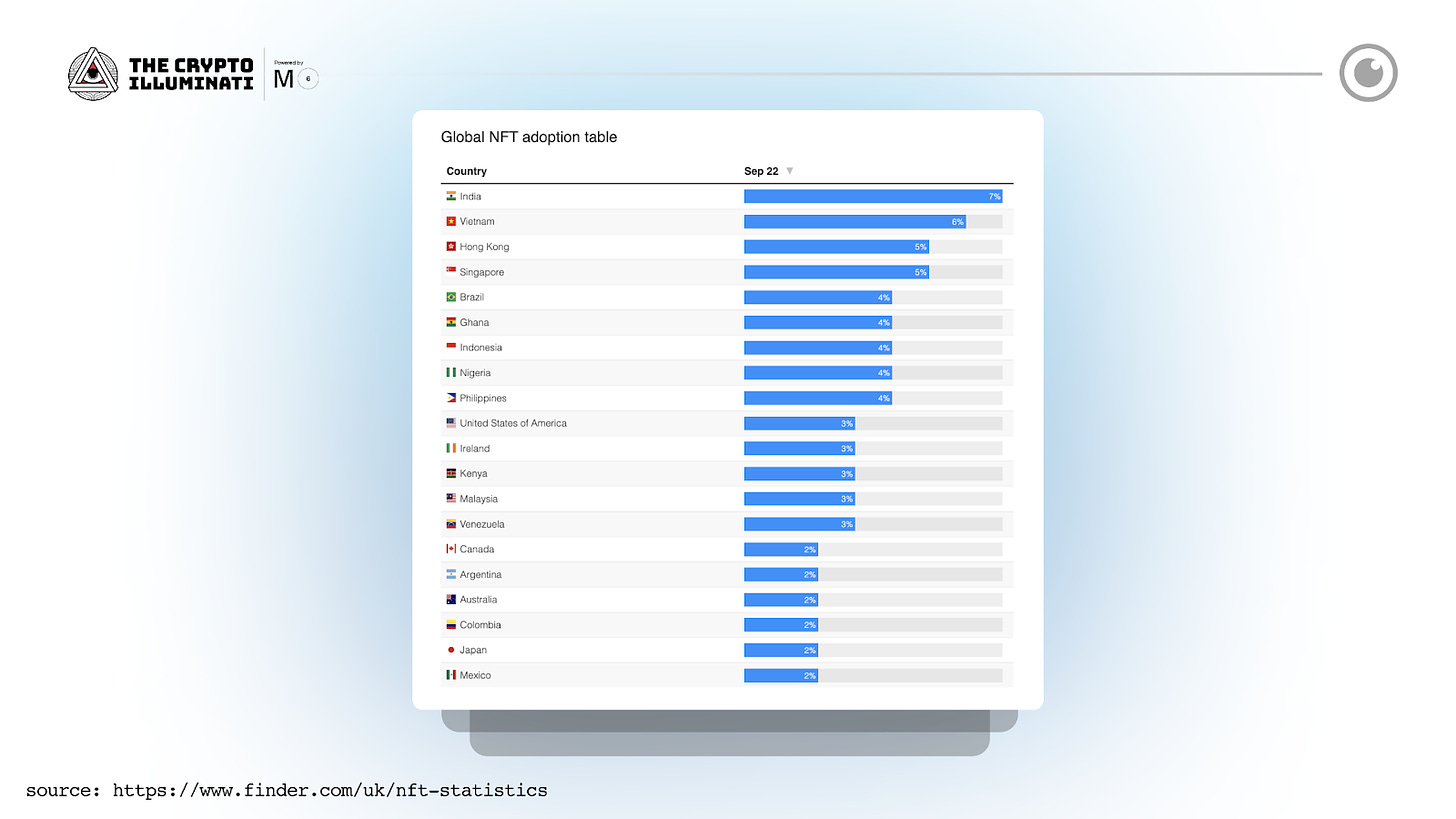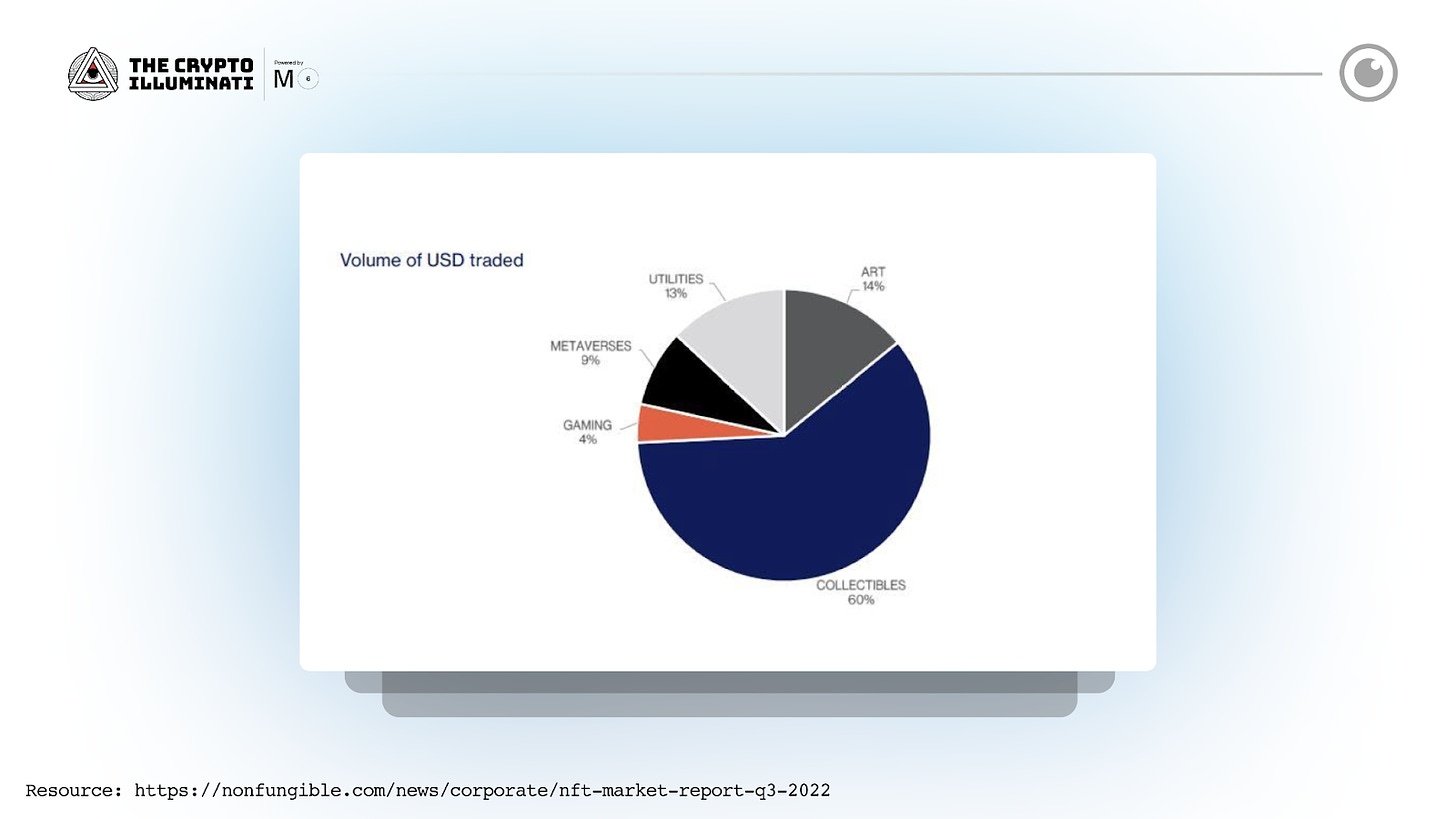Beyond the Hype: The Real Potential of NFTs for Mass Adoption
Valued at around $8 billion, the NFT space can help fast-track adoption of digital assets
NFTs have recently gained a lot of attention due to the explosion of the NFT market, reaching a total market capitalization of over $8 billion in 2021.
The current NFT market cap, according to the Messari Crypto Theses for 2023, is about $7.5-10.0 billion, with two-thirds of that coming from profile picture (“PFP”) collections like Crypto Punks and Bored Apes. But beyond the hype and speculation, NFTs have the potential to facilitate the mass adoption of digital assets in many ways.
People have evolved past focusing solely on potential financial gain. Long-term investments have begun to cross their minds. The market and product offerings have also shifted in many positive ways in favor of NFTs with utility.
NFT utility has become crucial since it gives the technology value and functionality. Brands that want to utilize NFTs must have a robust business model and industry-specific use case plan. The ownership of works of digital art like CryptoPunks is among the most well-known use cases for NFTs.
The concept of "GameFi" involves integrating NFTs into games to represent in-game assets and rewards. This allows players to own and trade virtual items, such as weapons and armor, as if they were physical objects. Using NFTs in gaming could potentially drive wider technology adoption by making it more accessible and fun for mainstream users.
The benefits of NFTs have also evolved into the area of digital ownership. In the past, it was difficult to prove ownership of a digital asset because it could be easily copied and distributed without permission. NFTs solve this problem with the help of blockchain technology.
In addition to digital ownership and gaming, NFTs have also emerged in other areas, such as art. The rise of AI art, in particular, has led to the creation of NFTs that represent unique and one-of-a-kind pieces of art created by artificial intelligence. This can revolutionize the art world by making it more inclusive and accessible, as anyone with an internet connection can create and sell their own AI art.
NFT Adoption 📈
Several factors are driving the adoption of NFTs, but primarily utility. One of the main drivers is the increasing digitization of the world and the shift towards online commerce.
With the rise of e-commerce and online marketplaces, NFTs provide a way for creators to authenticate and sell their digital products, and for buyers to verify ownership and authenticity.
Another factor driving NFT adoption is the increasing importance of provenance and authenticity in the digital world. In a world where it is easy to copy and distribute digital content, NFTs provide a way for creators to assert ownership and buyers to ensure that they purchase a unique and authentic item.
NFTs also offer utility by enabling new business models and revenue streams for creators. For example, artists and musicians can use NFTs to sell exclusive, limited-edition versions of their work, or offer collectors a way to own a piece. NFTs can also be used to enable new forms of interactivity, such as allowing fans to access exclusive content or experiences.
Other Use Cases 🃏
NFT virtual land
Cryptoverse
Decentralised Social (DeSo)
ENS & Identity
Creator Royalties vs. Monopolist Taxes
NFT tickets: The NFT ticketing market is expected to be worth $68 billion by 2025 and presents a practical use case for NFT technology.
NFT Statistics 📊
With over $537 million in trading volume for the third quarter of 2022, the collectibles segment represents 60% of the market share. With a 52% drop in active wallets, this means wallets that have bought “Collectible NFTs” have preferred to keep their NFT rather than sell it at a loss.
Meanwhile, the Art (14%) and Utilities (13%) segments experienced the most volume this quarter. Only the Utility segment stands out and shows a promising future with a volume of assets increasing by +44% and liquidity accelerating by +5%.
What To Expect In 2023 🗓
Despite the potential of NFTs to drive mass adoption, there are also challenges and obstacles to overcome. One of the main concerns is the environmental impact of the NFT market, as the energy consumption required to process NFT transactions is significantly higher than that of traditional cryptocurrency transactions. There are also questions about the long-term value of NFTs and whether they will continue to be in demand as the market matures.
The NFT Market is stabilizing thanks to solid and engaged communities with healthy trading behavior. A new chapter in the history of NFTs is slowly being written underneath the radar of the mainstream after the first period of NFTs, where profit and speculation ruled supreme, appears to be finished.
A new boom is starting to form. Looking to the future, it is likely that we will see continued growth and adoption of NFTs in a variety of industries. In the art world, we may see more museums and galleries experimenting with NFTs to authenticate and sell digital versions of their collections. In the gaming industry, we may see more use of NFTs to sell in-game items and experiences and enable new forms of gameplay.
There is still time to prepare for it, but get ready because this wave will likely be even more explosive and impactful than the “NFT Collectibles” era.
Please Share, Leave Feedback, and Follow Us on Twitter, Telegram, and LinkedIn to stay connected with us.







